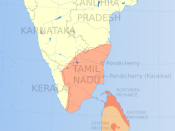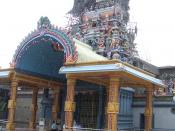Differing views often cause tension with an otherwise peaceful society. There are many reasons for this momentous sepapratist revolution in Sri Lanka. The Hindu Tamils are eager to form their own state. Since the tamils have a larger part in the government than the Sinhalese, the Buddhists are jealous and feel that their rights are not being protected. Ethinic conflicts between the majority sinhalese Buddhists and the minority Hindu tamils cause strife. The tamils feel that their language should be the official language yet are forced to be fluent in the language of the Sinahalese. In addition, the tamils, discovering the opportunity of education saw this new education as a way of advancing. But the Sinhalese who resented the british and their attempts to convert them, declined the education which was offered to them. Thus, with these two uncompromising sides, this conflict could last for a long period of time.
The fighting has gone on since 1983, and is continuing with no end in sight. The tamils who are fighting for a new state calling it tamil eelam, are unwilling to lay down their weapons, hence, negotiations are slow and virtually inaffective.
The Tamils, who account for eighteen per cent of Sri Lanka's seventeen million people, felt that the Sinhalese Buddhists, who controlled both the government and the military, were discriminating against them. (Nemeth 45) From their homes and areas of residence, to the education they received, and eventually to the occupation they had, the partiality toward the minority Tamils was clearly seen.(Rebeck 792-3) Many Tamils began to demand a separate Tamil state, and militant groups began to form. For many years after the independence of Sri Lanka from the British, there were recurring outbreaks of communal violence among Tamil groups. (Pratab 41) In 1983, the death of thirteen...


